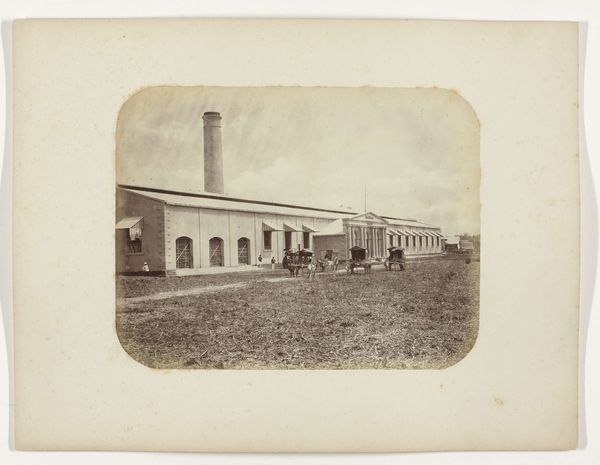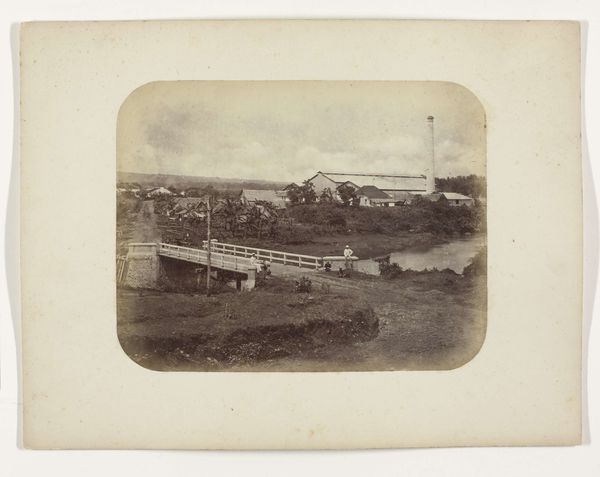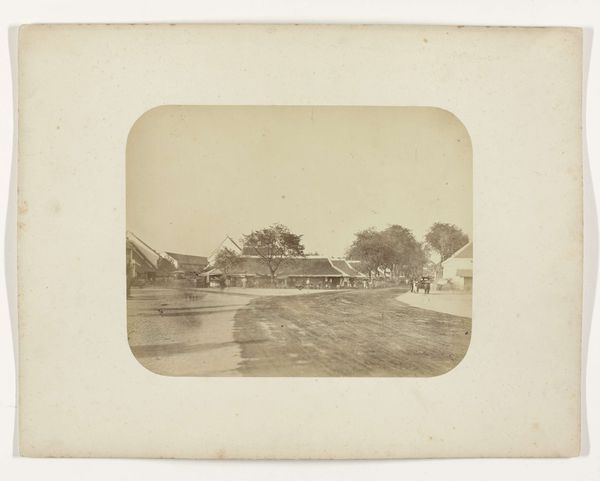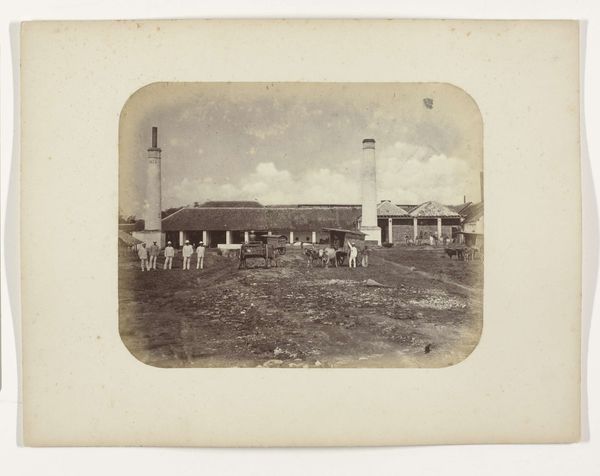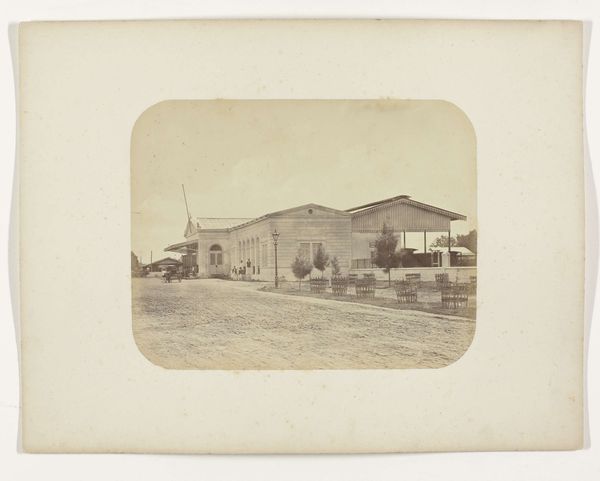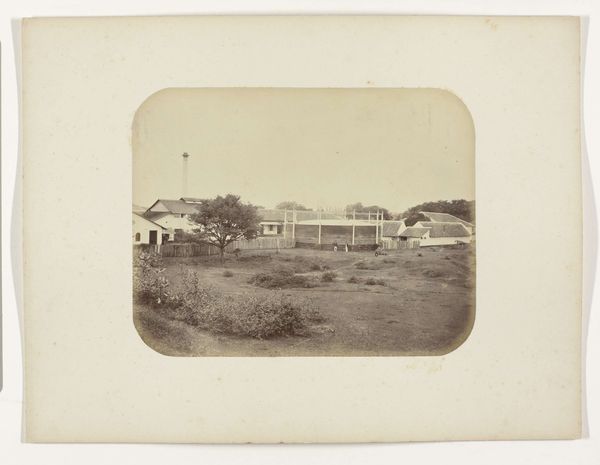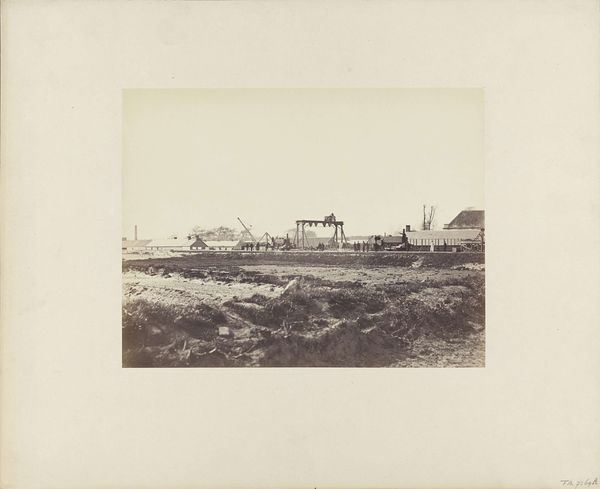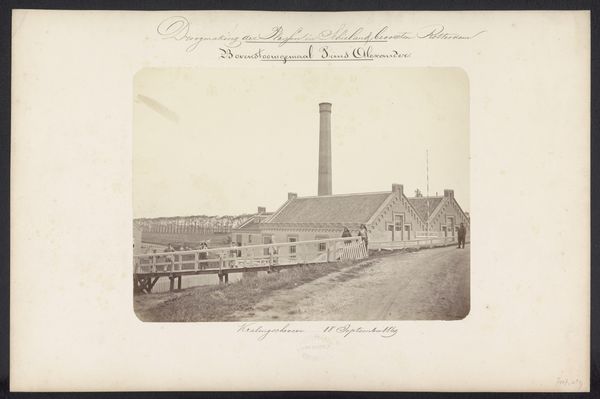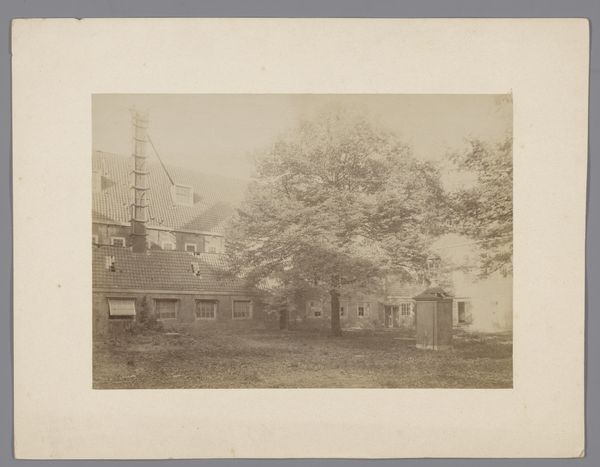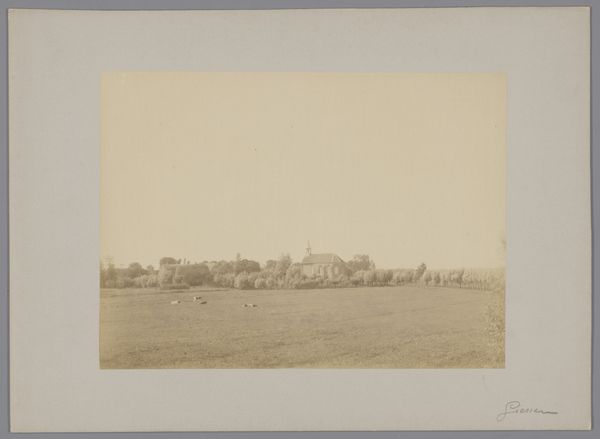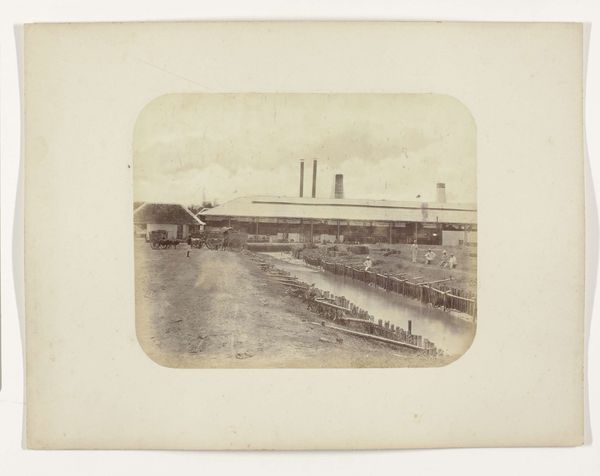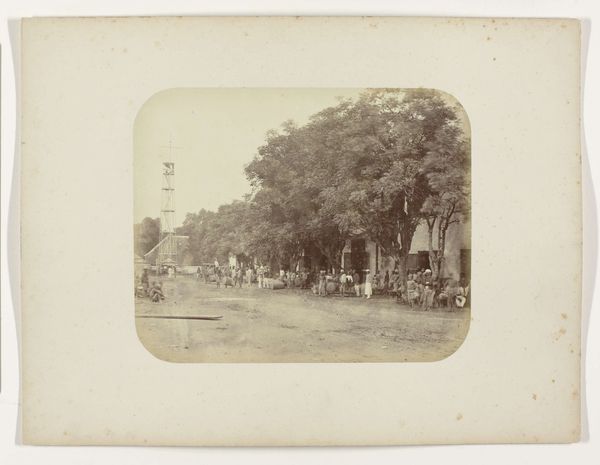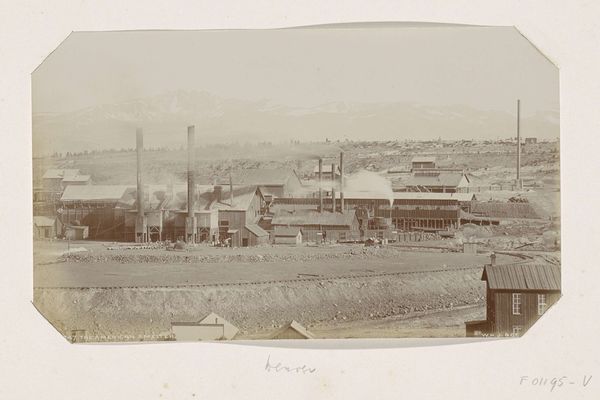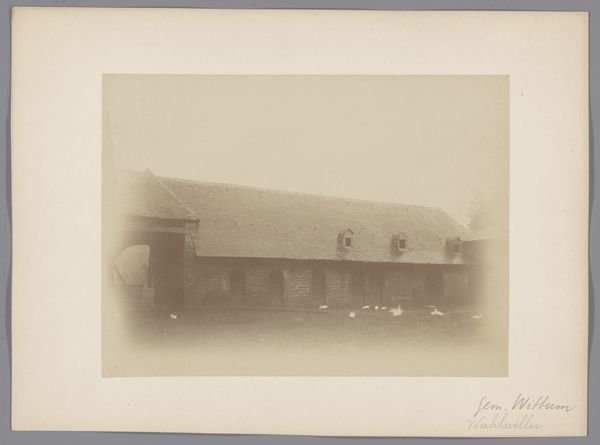
photography
#
landscape
#
photography
#
coloured pencil
#
realism
Dimensions: height 21.8 cm, width 28.4 cm
Copyright: Rijks Museum: Open Domain
Editor: Herman Salzwedel’s photograph, "Een Suikerfabriek" or "A Sugar Factory," taken between 1876 and 1884, is a striking image. It almost feels like a stage—a sugar factory as the backdrop, and people posed in the foreground. What stands out to you when you look at this photograph? Curator: The photograph whispers stories of labor and industry. See how the factory’s chimneys punctuate the skyline, like imposing figures. Observe how the workers are arranged: they're both part of, yet strangely detached from, the industrial structure looming behind them. The photograph isn't merely documenting; it's presenting a visual narrative of power dynamics and human cost, a record infused with symbolic undertones of colonialism and industrialization in the East. Don't you see a contrast between the workers and the industry? Editor: I do see that. The sharp, geometric lines of the factory juxtaposed against the softer, rounded shapes of the people create that contrast. The rigid formality also emphasizes that power dynamic you mentioned. So, is Salzwedel commenting on the colonial system through this staged image? Curator: Possibly. The symbolism is potent: sugar, a product desired across the globe, extracted through labor—all visually framed within the colonial gaze. Salzwedel might be inviting us to reflect on the human element within this industrial machine. It urges us to ask, "What's being built here? And at what cost?" Does understanding these implications change your initial impression of the photograph? Editor: It certainly does. What I initially saw as a staged photograph now feels heavier, imbued with layers of historical and cultural significance. Thanks for revealing those symbolic depths! Curator: And thank you for prompting that exploration. Art is always a conversation, a dialogue between past and present.
Comments
No comments
Be the first to comment and join the conversation on the ultimate creative platform.
